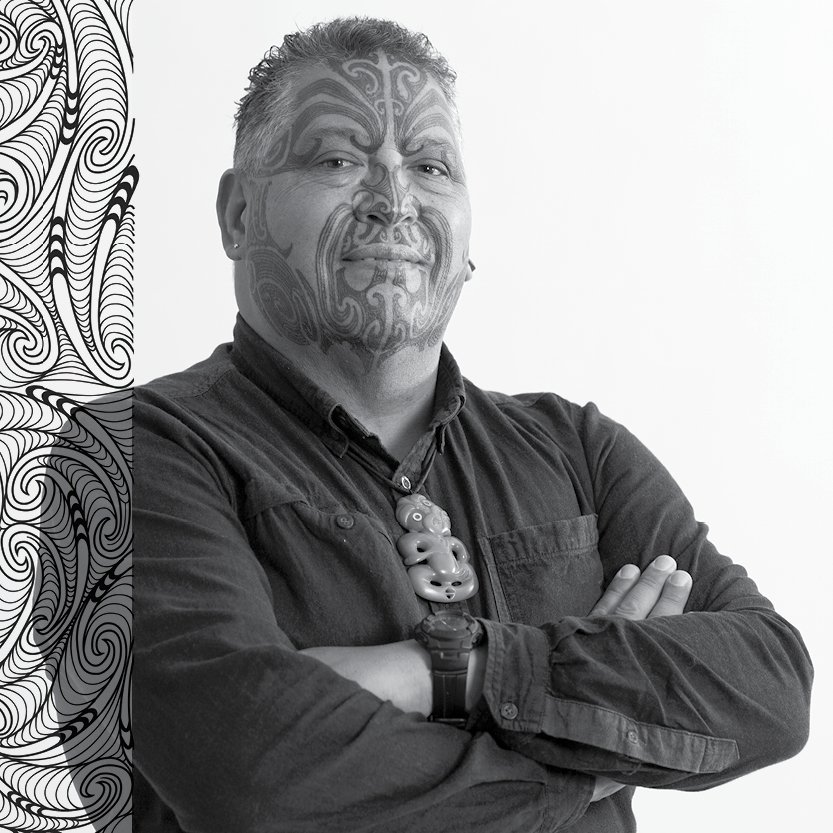Ngarino Ellis
RĀ TUATAHI | 1.45PM
MANAWA TOUTOU | WHARE WHAKAIRO
WHARE WHAKAIRO: Conversations around indigenous narrative, creative expression and wāhine kai whakairo
Maori art history: A Ngapuhi perspective.
Ngarino Ellis.
Whakairo, new media, raranga, photography, adornment, moko: all these practices revolve around essential ideas, including mana, tapu, korero, whenua, and whakapapa. Together they form the basis for Maori Art History, enabling us to conceptualize an artistic landscape, both past, and present, driven by artists, patrons, and communities keen to create physical works which would reflect, record, and enhance critical ideas of the time.
This talk will demonstrate how Art History can help us understand the past through close reading of taonga tuku iho, focusing mainly on Rakai/adornment. A hei tiki from Ruapekapeka Pa can shed light on economics and politics, the role of women, and the impact of external influences such as Christianity and war. The heru iwi and rei puta worn by Te Kuku (Ngare Raumati) when he met James Cook symbolizes the turbulent events associated with cross-cultural events. The moko pūhoro worn on the necks and foreheads of Ngāti Kahu women in the late 18th-century record styles which stopped being practiced within a couple of generations, the design still waiting to be re-incised. Artists in Te Tai Tokerau changed their art style as the culture also changed, one driving the other. We are now in a prime position to bring together our taonga Ngapuhi collections in museums with those in whanau homes and marae, celebrate where we have come from, and strategise how to bring together once again.
Ko Rakaumangamanga te maunga
Ko Ipipiri te moana
Ko Te Rawhiti te marae
Ko Ngati Kuta te hapu
Ko Ngapuhi te iwi
Ko Hikurangi te maunga
Ko Waiapu te moana
Ko Tai Rawhiti me O Hine Waiapu nga marae
Ko Ngai Tane me Te Whanau-a-Takimoana nga hapu
Ko Ngati Porou te iwi
Ngarino Ellis is an Associate Professor of Art History at the University of Auckland. She is a mokopuna of Walter and Emere Mountain of Te Rawhiti.
She has been researching and teaching about Māori art and architecture for the past 20 years. Her current research is her third Royal Society funded project, titled Nga Taonga o Wharawhara: The World of Maori Body Adornment (2020-3). Ngarino is completing, with Professor Deidre Brown (Ngapuhi, Ngati Kahu), a book entitled Toi Te Mana: A History of Indigenous Art from Aotearoa New Zealand (due out late 2021); this builds on an earlier edited book Te Puna: Maori Art from Te Tai Tokerau, Northland. Her first sole-authored book A Whakapapa of Tradition: One Hundred Years of Ngāti Porou Carving 1830-1930 (2016) focused on the transformation of Maori art in the Iwirakau carving school. Ngarino’s teaching includes Maori Art, Art Crime, Gender, and Indigenous Peoples and Museums.
Her work has been recognised with various awards including the The Royal Society Te Apārangi Early Career Research Excellence Award for Humanities (2020), the National Tertiary Teaching Award (Kaupapa Maori category, 2019), the Judith Binney Best First Book for Illustrated Non-Fiction (Ockhams 2017), and Best Māori Art Book (Ngā Kupu Ora Māori Book Awards 2017).






